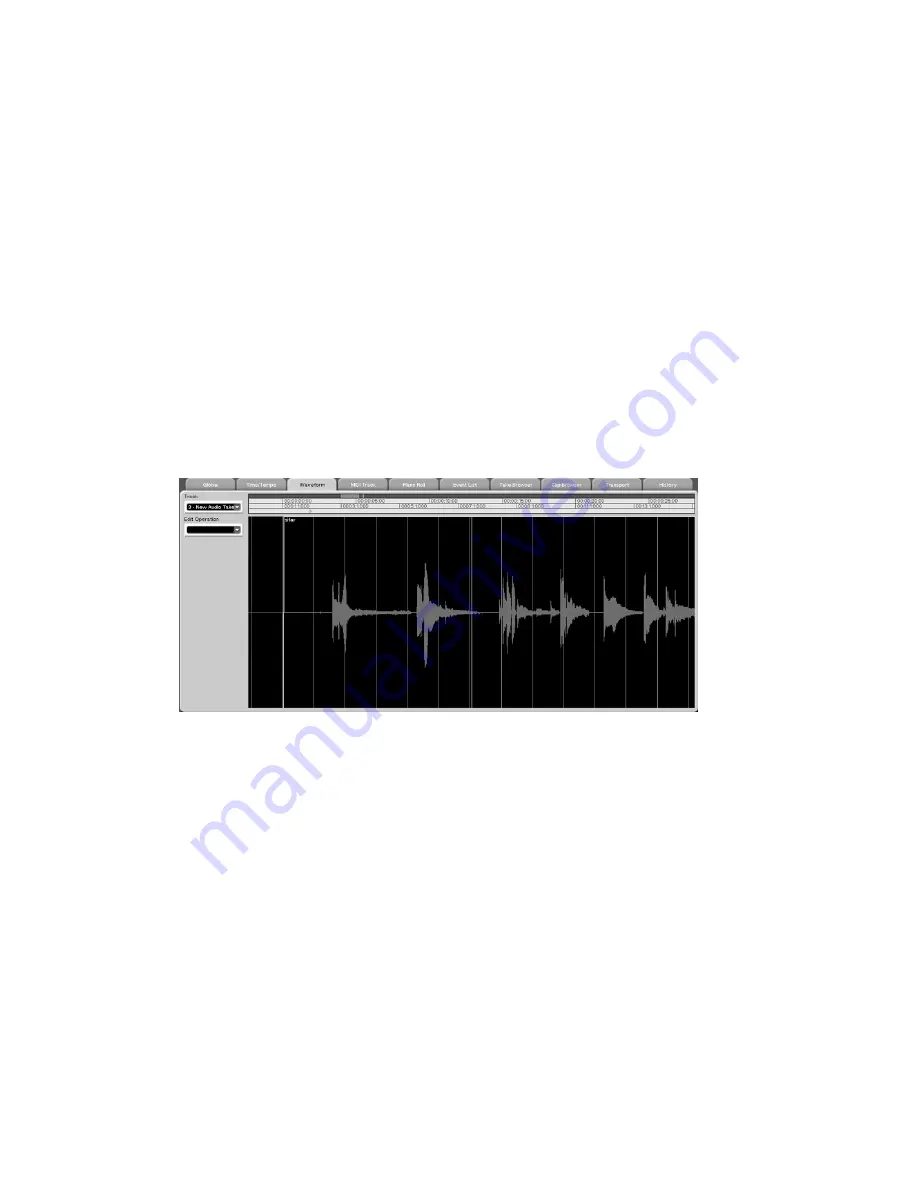
26
Changes made to the VGA editing interface in version 1.50
Please note that all screens described in this section are assumed to be VGA screens. There will be no
mention of LCD screens in this section.
Please note also that the VGA screen can only be controlled by the PS/2 mouse and keyboard. All
references in this section will assume this. For instance, an explanation including shift would be
referring to the shift key on the PS/2 keyboard, not the surface of the SX-1.
1.
On-screen recording indication
There is now a red bar when recording audio, to let you know something is happening.
2.
Crossfades were added
When digital audio is either recorded or edited, it is sometimes necessary to create a smooth transition
between the spot where the original audio ends and the new passage begins. By default, nearly all
devices that record digital audio create a crossfade (usually around 10 milliseconds or so) when
punching in or out (but not necessarily when editing). The term crossfade comes from the common
graphical representation (an X ) that results from a linear fade in and fade out between two audio files.
Let s check it out. On the Track page, find the beginning of an audio file:
With the Region tool, drag a selection that starts before the audio file begins and ends a short length
into the file.
Once you ve made your selection, press Alt-F, or select Fade from either the main Edit menu at the
top of the screen or from the Edit Operation menu at the left side of the waveform tab.
If you made your selection on the top portion of the Track screen s waveform view, you will notice
that the SX-1 automatically opened the Waveform tab at the bottom of the screen when you selected
the Fade option. This was done to ensure that you are looking at the correct interface when you are
making your fades.






























